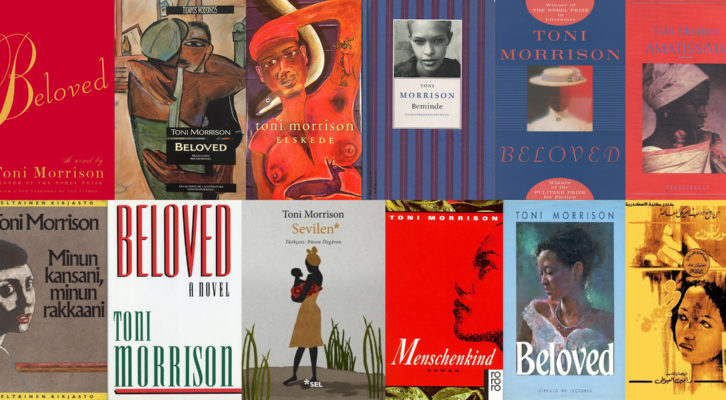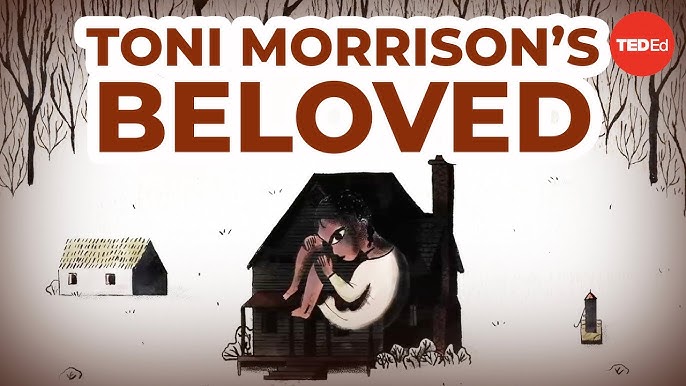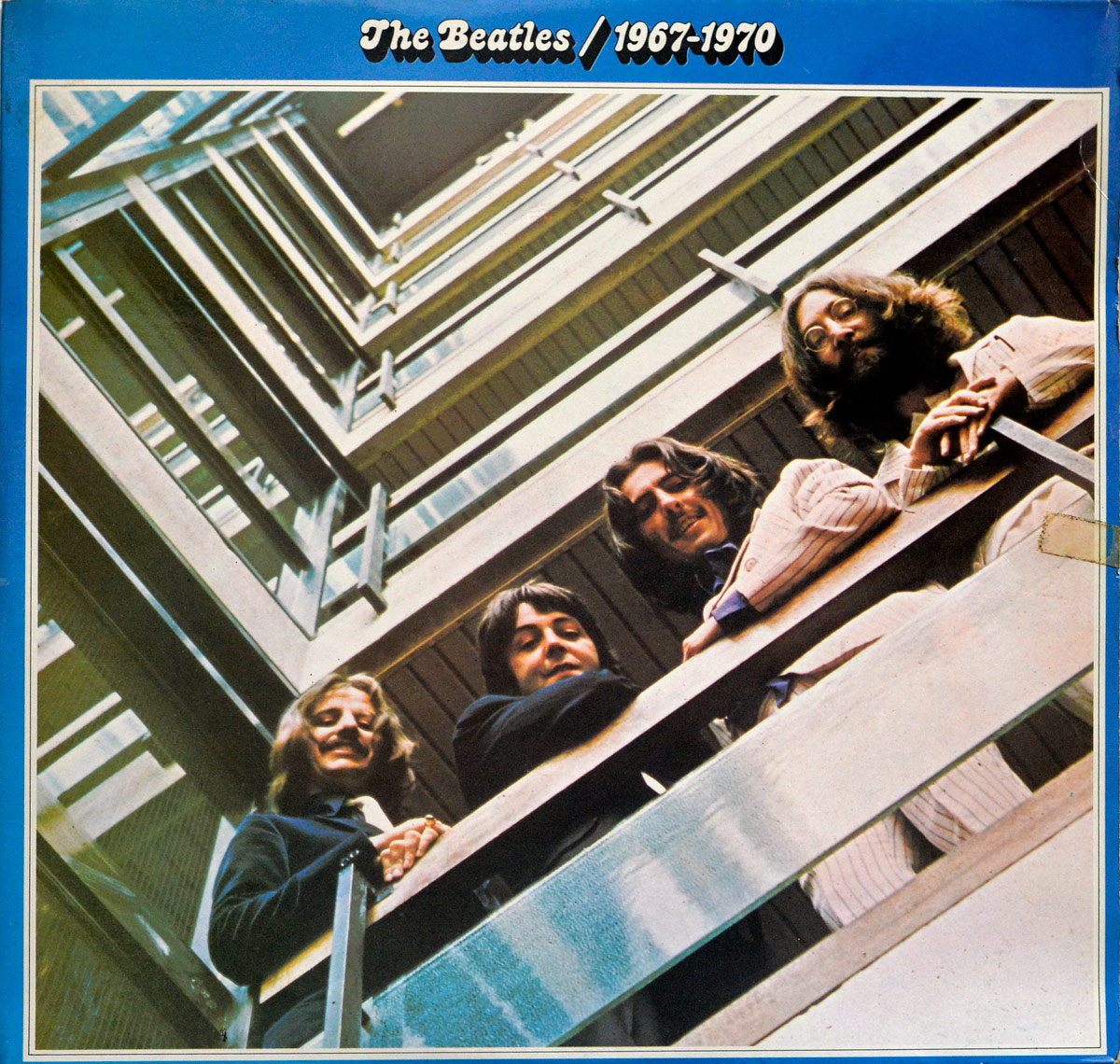
Hey, lit lovers! Get ready to take a deep dive into one of the most powerful and unforgettable novels ever written: Toni Morrison’s Pulitzer Prize-winning masterpiece, ‘Beloved’. Published in 1987, this book isn’t just a story; it’s an experience, a journey into the harrowing aftermath of slavery and the enduring spirit of those who survived it. Seriously, if you’ve read it, you know it sticks with you, a testament to its profound impact and the sheer brilliance of Morrison’s storytelling.
The novel plunges us into 1873 Cincinnati, Ohio, where Sethe, a formerly enslaved woman, and her daughter Denver live in a house so haunted it literally drove Sethe’s sons away. It’s a place steeped in ‘rememory’ – a concept Morrison masterfully uses to show how the past isn’t just past; it’s a living, breathing entity that refuses to let go. But beyond the ghost stories and psychological depth, ‘Beloved’ shines a spotlight on some of the most incredibly complex and resilient characters you’ll ever encounter, each battling their own demons and searching for fragments of self in a fractured world.
Today, we’re pulling back the curtain on eight pivotal figures who bring this epic narrative to life. These aren’t just names on a page; they’re embodiments of pain, love, defiance, and an unwavering search for self amidst unimaginable trauma. So grab your tissues, because we’re about to explore the heart-wrenching journeys of the characters who make ‘Beloved’ truly unforgettable. Let’s start with the central figures whose lives are forever intertwined at 124 Bluestone Road.

1. **Sethe: The Indomitable Spirit Forged in Fire**Alright, let’s kick things off with Sethe, the fierce heart of ‘Beloved’ whose story is a whirlwind of strength, sacrifice, and soul-crushing trauma. She’s the undeniable protagonist, a woman who clawed her way out of the brutal Sweet Home plantation. But freedom doesn’t mean forgetting, and Sethe lives with the physical reminder of her past – those horrific scars on her back, vividly described by a white girl as ‘a Choke-cherry tree. Trunk, branches, and even leaves.’ This ‘tree’ is a constant, painful presence, symbolizing the deep-rooted suffering she endured and continues to carry.
Sethe’s entire existence is defined by a ‘dangerous maternal passion’ to protect her children, a love so ‘thick’ that it leads to an unthinkable act. The novel tells us she will ‘do anything to protect her children from suffering the same abuses she experienced when she was enslaved.’ When the ‘four horsemen’ came to return her and her children to slavery, Sethe, ‘terrified of returning to Sweet Home and its vicious manager Schoolteacher,’ made a desperate choice in the woodshed, believing she was ‘trying to put my babies where they would be safe.’ It was an act born of a mother’s ultimate terror and love.
This act of infanticide, while born of love, ‘results in killing one daughter, her own ‘best self”, and isolates her surviving daughter, Denver, from the Black community. It’s a profound exploration of the ‘mother-daughter relationships’ theme, where maternal bonds, under the extreme duress of slavery, ‘inhibit her own individuation and prevent the development of her self.’ Her guilt over this decision consumes her, leading her to ‘spend all of her time and money on Beloved to please her and try to explain her actions,’ ultimately losing her job and herself in the process.
The psychological toll on Sethe is immense. She ‘is greatly influenced by her repression of the trauma she endured,’ constantly grappling with ‘rememories’ that blur the lines between past and present. This ‘repression and dissociation from the past causes a fragmentation of the self and a loss of true identity,’ as the novel masterfully illustrates. Sethe is a prime example of the characters who ‘suffer a loss of self,’ struggling to reconcile their pasts and memories with their present freedom and to forge a new identity.
Yet, Sethe also embodies a unique form of heroism. Morrison depicts her ‘not as a conventional hero but as an individual capable of allowing those she cares for to break from the shackles of the past.’ Her defiant justification – ‘It ain’t my job to know what’s worse. It’s my job to know what is and to keep them away from what I know is terrible. I did that’ – underscores her unwavering conviction. Her eventual path to individuation only happens ‘after Beloved’s exorcism,’ when she can finally begin to accept a relationship ‘completely ‘for her,’ her relationship with Paul D,’ starting to question, ‘Me? Me?’ when he tells her she is her own ‘best thing.’

2. **Beloved: The Unseen Force, The Unforgettable ‘Rememory’**Then there’s Beloved, the character who isn’t just a part of the story, but arguably *is* the story itself, embodying the unspoken horrors of the past. Her very identity is ‘opaque,’ central to the novel’s profound mysteries. She appears ‘mysteriously from a body of water near Sethe’s house,’ a spectral figure ‘discovered soaking wet on the doorstep.’ This dramatic entrance immediately signals that she is no ordinary visitor, instantly changing the dynamic at 124 Bluestone Road and setting the stage for deep emotional upheaval.
The context makes it clear: Beloved is widely understood to be ‘the murdered baby who haunted 124,’ and even Toni Morrison herself explicitly stated, ‘the character Beloved is the daughter who Sethe killed.’ Her name itself is a heart-wrenching detail, drawn from the single word ‘Beloved’ that Sethe could afford to have engraved on her infant daughter’s tombstone. This name carries the weight of a mother’s unspeakable grief and desperate love, a constant whisper of the ‘pain’ that permeates the entire narrative.
Beloved’s primary role is to act as ‘a catalyst to bring repressed trauma of the family to the surface.’ She forces Sethe, Paul D, and Denver to confront their deeply buried ‘rememories’ of slavery and loss. Her uncanny knowledge, like ‘recount[ing] stories of past slaves, including Sethe’s mother,’ suggests a connection to the collective African-American experience of slavery, acting as a living embodiment of the ‘sixty million and more’ who perished during the Middle Passage and under the institution of slavery. She is the past personified.
Initially, Denver is ‘eager to care for the sickly Beloved,’ forming a bond that temporarily fills her own void of isolation. Sethe, consumed by guilt and a desperate hope that ‘Halle and her sons will come back and they will all be a family together,’ becomes ‘overjoyed’ by Beloved’s presence, showering her with attention and trying to ‘explain her actions.’ This dynamic shows how the pain of the past can be ‘romanticized’ or beautified, yet Beloved’s presence ultimately becomes destructive, demanding and ‘slowly depleting Sethe.’
As Beloved grows ‘bigger and bigger, eventually taking the form of a pregnant woman,’ and her presence ‘consumes Sethe’s life,’ the novel explores the dangers of unresolved trauma. She represents the idea that ‘to heal and humanize, one must constitute it in a language, reorganize the painful events, and retell the painful memories.’ Beloved forces this confrontation, ultimately leading to a collective act of community healing and Sethe’s eventual, albeit painful, release from her suffocating grip, allowing her to finally consider self-love.

3. **Paul D: The Journey of a ‘Tobacco Tin’ Heart**Next, let’s talk about Paul D, a powerful and poignant figure whose journey through ‘Beloved’ is as much about physical survival as it is about emotional reckoning. He’s one of the few survivors from Sweet Home, retaining his enslaved name – a grim reminder that ‘most of the enslaved men at Sweet Home were named Paul.’ His life after slavery has been a relentless search for peace, ‘moving around continuously’ to outrun the demons of his past, including the horrific experience of being ‘forced to live in a chain gang.’
Paul D carries the weight of his past in what he calls his ‘tobacco tin’ heart, a powerful metaphor for how he ‘contains his painful memories.’ This emotional repression is a key aspect of the ‘psychological effects of slavery’ theme, where ‘most former slaves tried to repress these memories in an attempt to forget the past,’ leading to ‘a fragmentation of the self and a loss of true identity.’ He seeks to protect himself by keeping his emotions locked away, believing this will shield him from further pain.
His reunion with Sethe is a moment of fragile hope, sparking a romantic relationship that promises a chance at normalcy. He initially brings a sense of order to 124, even ‘forc[ing] out the spirit,’ earning Denver’s ‘contempt’ but offering Sethe a brief respite. He acts ‘fatherly towards Denver’ and is ‘the first to be suspicious of Beloved,’ his cautious nature standing in stark contrast to Sethe’s desperate embrace of the mysterious newcomer. His presence suggests a path toward rebuilding a family.
However, Beloved’s arrival proves to be a crucible for Paul D. She brutally forces open his ‘tobacco tin,’ unleashing ‘horrific memories from his past, including the ual violence inflicted upon him and the other men while in a chain gang.’ This painful confrontation is essential for his healing, forcing him to engage with the past rather than repress it. His struggles also highlight the novel’s exploration of the ‘definition of manhood’ in the post-slavery era, where systemic racism ‘distorts a man from himself’ and limits their dreams.
Despite the profound challenges and his temporary departure after learning Sethe’s full story, Paul D ultimately returns to Sethe. His declaration that ‘Sethe is her own ‘best thing” is a pivotal moment of affirmation, allowing Sethe to begin her own healing and individuation. He represents the possibility of love and support, even amidst deep scars, showing that ‘reconciling their pasts and memories of earlier identities’ is a painful but necessary step toward wholeness, especially when shared with another survivor.

4. **Denver: From Shadowed Girl to Self-Reliant Woman**Now, let’s turn our attention to Denver, Sethe’s quiet, enigmatic daughter whose journey from isolation to independence is truly inspiring. At the tender age of 18 when the narrative begins, Denver has lived a life profoundly shaped by the trauma at 124 Bluestone Road. ‘Isolated from her community after Beloved’s killing,’ she’s seen her brothers flee, leaving her ‘shy, friendless, and housebound,’ with only the ghost of her sister as a companion until Paul D’s arrival.
Denver’s early bond with the haunting spirit, and her subsequent ‘contempt’ when Paul D drives it away, underscore her profound loneliness. She is desperate for connection, and when Beloved appears, Denver’s ‘eager[ness] to care for the sickly Beloved’ is immediate. She nurtures the mysterious woman, even coming to ‘believe[s] is her older sister come back,’ creating a sense of family and purpose that had been missing from her sheltered existence. This initial connection becomes a crucial stepping stone for her growth.
This initial attachment, however, gives way to a crucial awakening as Beloved’s influence becomes more sinister. Denver ‘reveals her fear of Sethe,’ finally understanding the terrifying depth of her mother’s actions and why her brothers ‘shared this fear and ran away due to it.’ This realization marks a significant turning point, compelling her to look beyond the confines of 124 and seek help for her mother and herself, a clear break from her past passivity.
Denver’s transformation from a ‘childish character’ into a ‘protective woman’ is a powerful narrative of self-actualization. Recognizing that ‘neither Beloved nor Sethe seemed to care what the next day might bring,’ Denver courageously decides it ‘was on her.’ She makes the monumental choice to ‘leave the yard; step off the edge of the world,’ venturing out to ‘go ask somebody for help’ from the very community that had ostracized her family. This act is a definitive break from her ‘past isolation’ and a powerful display of her ‘individuation.’
Her heroism lies not in grand gestures, but in her steadfast resolve to save her mother and herself. Her plea for help mobilizes the community women, leading to the collective act that exorcises Beloved and frees Sethe from her parasitic grip. Denver subsequently ‘becomes a working member of the community,’ embracing her ‘personal independence’ and forging a future. Her story exemplifies how ‘Sethe fails to recognize her daughter Denver’s need for interaction with the Black community to enter into womanhood,’ and how, eventually, Denver succeeds ‘in establishing her own self and embarking on her individuation with the help of Beloved’s catalyst.’

5. **Baby Suggs: The Heartbeat of the Clearing, Silenced by Pain**Moving on to a character whose spirit once illuminated the darkest corners, we have Baby Suggs, Sethe’s mother-in-law and a figure of immense moral authority in the Black community. Her freedom wasn’t just handed to her; it was earned, a testament to her son Halle’s unwavering love and sacrifice, as he ‘worked to buy her freedom.’ Once free, Baby Suggs didn’t just exist; she flourished, establishing herself as a revered leader in Cincinnati. She preached a powerful, essential message for her people to ‘love themselves because other people will not,’ creating the sacred space known as the Clearing where collective healing and self-affirmation were nurtured. She was, in many ways, the spiritual anchor for those navigating the brutal wake of slavery.
However, this respect and hard-won peace didn’t last. The community’s admiration for Baby Suggs eventually soured, partly due to envy when she performed a minor miracle of turning ‘some food into a feast.’ But the true blow, the one that shattered her spirit and her standing, was Sethe’s horrifying act of infanticide. This event, born of Sethe’s ‘dangerous maternal passion,’ cast a long, dark shadow over Baby Suggs and her family, leading to their tragic isolation from the very community she had once led. The irony is heartbreaking: the woman who taught others to love themselves was abandoned by them.
Overwhelmed by the crushing weight of collective trauma and personal grief, Baby Suggs retreated. She ‘retires to her bed, where she thinks about pretty colors for the rest of her life.’ This vivid detail, her solitary contemplation of hues, is a poignant symbol of her surrender to a world too painful to engage with. It’s a quiet, internal battle, a refusal to see the world’s harsh realities any longer. She dies at 70, ‘eight years before the main events’ of the novel begin, leaving behind a legacy of both profound wisdom and tragic disillusionment.
Her method of dealing with the unspeakable loss of children—’by refusing to become close with her children and remembering what she could of them’—stands in stark contrast to Sethe’s desperate, all-consuming attachment. Baby Suggs’s story is a testament to the myriad ways individuals coped with the unique agony of maternal bonds under slavery. Even in her retreat, her influence endures, as Denver later steps out into the world, seeking the community’s help, echoing Baby Suggs’s earlier role as a connector and healer, a legacy that ultimately empowers Denver’s heroism.

6. **Halle: The Shadow of Sweet Home, A Mind Undone**Next, let’s shine a light on Halle, a character whose physical presence is primarily felt through flashbacks and the enduring love and pain of Sethe and Baby Suggs. He is the loving son of Baby Suggs, the devoted husband of Sethe, and the father of her children, embodying the hopes and dreams that slavery brutally crushed. Their marriage at Sweet Home, a rare spark of normalcy and commitment on the brutal plantation, speaks volumes about their resilience and desire for a real family, even under unimaginable oppression. He was so dedicated to his family that he tirelessly ‘worked to buy her freedom’ for his mother, Baby Suggs, a profound act of love and sacrifice.
Tragically, Halle and Sethe were separated during her harrowing escape from Sweet Home. His fate remains one of the novel’s most haunting unknowns, contributing to the pervasive sense of loss that permeates the narrative. Paul D, another Sweet Home survivor, was the last to see Halle, describing him ‘churning butter at Sweet Home,’ a mundane act imbued with a tragic finality. This image hints at the quiet, desperate life he lived, constantly striving for a semblance of control and dignity within an inhumane system.
His presumed descent into madness, triggered by witnessing the horrific violation of Sethe by the Sweet Home residents, is a chilling testament to the psychological toll of slavery. It’s a moment that utterly shatters his spirit, reducing a hardworking, good man to a broken shell. The novel explores the ‘definition of manhood’ in the context of slavery, showing how systemic racism ‘distorts a man from himself’ and shatters his ability to protect his loved ones, leading to an inevitable ‘loss of true identity.’ Halle’s fate underscores the idea that slavery stripped men of their very essence, leaving them powerless and undone.
Baby Suggs, with a mother’s foresight, ‘fears [Halle’s good qualities] make him a target’ for the brutality of the system. This fear is heartbreakingly realized, as Halle, despite his inherent goodness and industriousness, becomes another casualty of the Sweet Home nightmare. His story, though largely unseen, casts a long shadow over Sethe and her children, a constant reminder of the ‘fractured family relationships’ that were a direct consequence of slavery’s cruelty. The quiet tragedy of Halle’s disappearance underscores how deeply slavery wounded not just bodies, but also minds and souls, leaving families forever fragmented.



